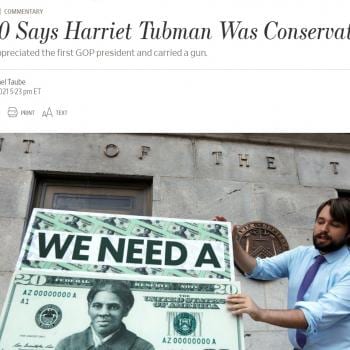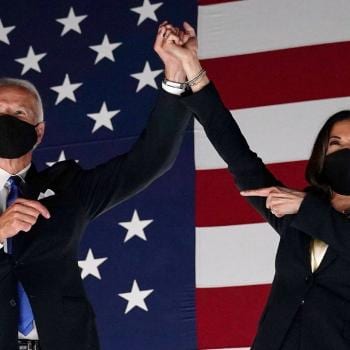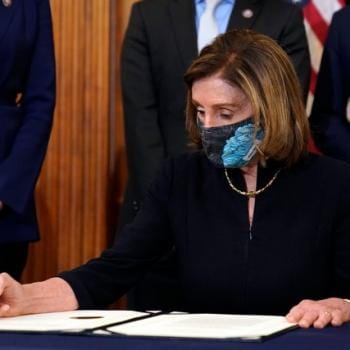A week ago Tuesday, speaking on the American Pastors Network’s “Stand In The Gap” radio program, former congresswoman Michelle Bachman had this to say of the caravan of asylum seekers traveling through Mexico: “over 80 percent are gang-aged males, military-aged males.”
I’m going to go out on a very sturdy limb here and guess that a “gang-aged male” is any boy or man between roughly the ages of 15 and 25. By this metric, I have four brothers who are “gang-aged males.”
I very much suspect that Bachman made up her “over 80%” number whole cloth, but even if it were accurate, I wouldn’t be worried or bothered. I can tell you why: if my “gang-aged” brothers lived somewhere where they were at a high risk of being coerced or threatened into a gang, I would absolutely want them to get out of there—and I would hope somewhere safer that would welcome them.
Several years ago, when Syrian refugees were pouring into Europe fleeing a war zone in their home country, conservatives shouted to the rooftops that the majority of the refugees were young, single men of military age. As though there was some sort of point to be made by this? If I lived in a war zone, you better believe I’d want my “military-age” son out of there, rather than risk him being pressed into service.
While Bachman’s number is likely exaggerated, it’s nevertheless likely that young men between 15 and 25 are overrepresented in the caravan of asylum seekers that has generated so much attention. The majority of unaccompanied minors entering the U.S. circa 2014 were teenage boys—what Bachman would call “gang-aged males”—and the flow of Syrian refugees making their way to Europe several years ago skewed young and male—what Bachman would call “military-aged males.” But there are reasons for this.
Beyond the reality that “gang-aged males” are in danger of (coercive) recruitment in a gang-controlled terrain and that “military-aged males” are in danger of (coercive) impressment into military service in a war zone, there are other reasons that young men are often overrepresented in movements of people.
One factor is safety. A friend recently introduced me to a graphic novel about two boys who fled from Nigeria to Italy, and the dangerous journey they took. She’d gotten to meet the book’s authors, she said. She asked why the book was about boys rather than girls, and they told her this was because girls on that trek face the threat of sexual violence, which would make the story that much harder to tell.
So, too, families in these situations often send young men ahead, to make money and find a home and set things in motion for the rest of the family to follow, ideally along less dangerous routes. There is nothing insidious about “gang-aged males, military-aged males” being overrepresented in people flows.
Frankly, a “gang-aged male” in a gang-dominated country who is leaving to seek a different life is the kind of “gang-aged male” we should want to have in our country. Unless it is Bachman’s position that all “gang-aged males” in societies controlled by gangs should be forced to join a gang, with no viable alternative?
Bachman does not appear to be able to actually see these young men—or to remember that they are people. For all the other “gang-aged males” like my brothers—wherever they may live—I hope they will always have access to people able to view them first not as “gang-aged,” but as human.
I have a Patreon! Please support my writing!
We want to know what you think about the upcoming midterm elections. Vote in our poll below!















